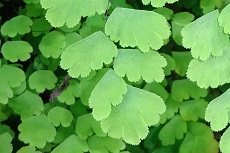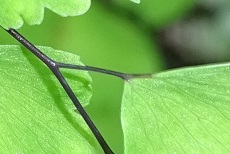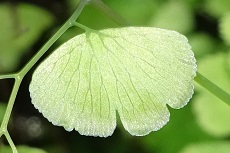| Home | Nature Weekly Index |
30 November 2014 | Brittle Maidenhair Fern (Adiantum tenerum) |
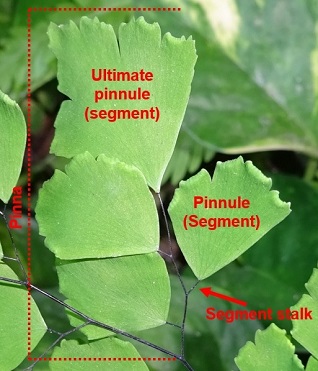 The first time that I took a picture of the Brittle Maidenhair Fern (Adiantum tenerum)
was during a trip at Bali, an Indonesia island in 2008. Back in Singapore, I chanced upon a naturalized colony in February
2012. At first, I had indicated its botanical name as Adiantum tenerum. Along the way, which I could not recall the exact
time, I changed the name to Adiantum raddianum since I could only find
Adiantum raddianum listed in the local plant flora checklist. I did not pay any specific interest in the features of this
fern back then.
The first time that I took a picture of the Brittle Maidenhair Fern (Adiantum tenerum)
was during a trip at Bali, an Indonesia island in 2008. Back in Singapore, I chanced upon a naturalized colony in February
2012. At first, I had indicated its botanical name as Adiantum tenerum. Along the way, which I could not recall the exact
time, I changed the name to Adiantum raddianum since I could only find
Adiantum raddianum listed in the local plant flora checklist. I did not pay any specific interest in the features of this
fern back then.
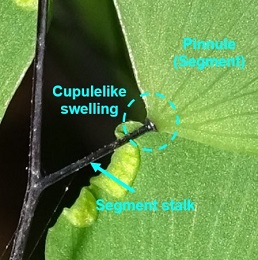 This month, I received a note to re-check the name of this fern versus my pictures. Based on the description in the
Flora of North America website,
stalks at the base of the segment pinnules (leaflets) of Adiantum tenerum terminate in "cupulelike swelling". A cupule is
a tiny cup. I tried looking for the "cupulelike swelling" in my existing pictures. But, due to the miniscule size of the stalk, I
could not tell whether there was a cup-liked base.
This month, I received a note to re-check the name of this fern versus my pictures. Based on the description in the
Flora of North America website,
stalks at the base of the segment pinnules (leaflets) of Adiantum tenerum terminate in "cupulelike swelling". A cupule is
a tiny cup. I tried looking for the "cupulelike swelling" in my existing pictures. But, due to the miniscule size of the stalk, I
could not tell whether there was a cup-liked base.
To get some clearer pictures, I made a specific trip last weekend. After magnifying the newly taken pictures, I did see the cup-liked base. The fern should indeed be Adiantum tenerum.
While doing the research online, I notice another distinction between the 2 ferns --- the shape of the sori (structure that housed the spore-bearing bodies) of Adiantum raddianum is kidney-shaped while that of Adiantum tenerum is oblong to crescent-shaped. I got pictures of the sori of Adiantum tenerum but not that of Adiantum raddianum.
Believe it or not, while visiting Gardens by the Bay this Friday for the first time, I saw plenty of Adiantum species in the Cloud Forest. One of them had kidney-shaped indusia at the back of the fronds which I suspected was Adiantum raddianum. After examining the pictures closely later, especially the segment stalks, it should be Adiantum raddianum. The segment stalk extended into the margin of the pinnule and did not end with a cup-liked base.
The pictures below summarised the features of the 2 ferns:

.jpg)
.jpg)
.jpg)
